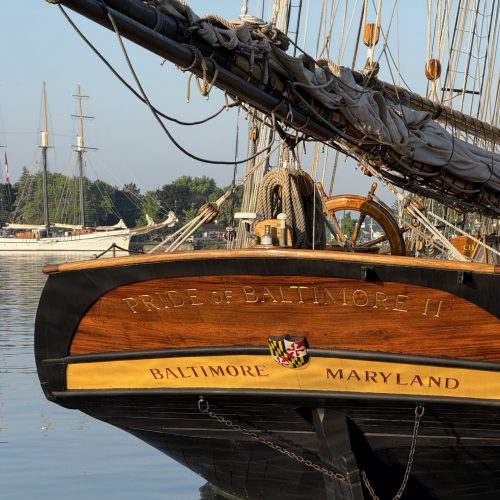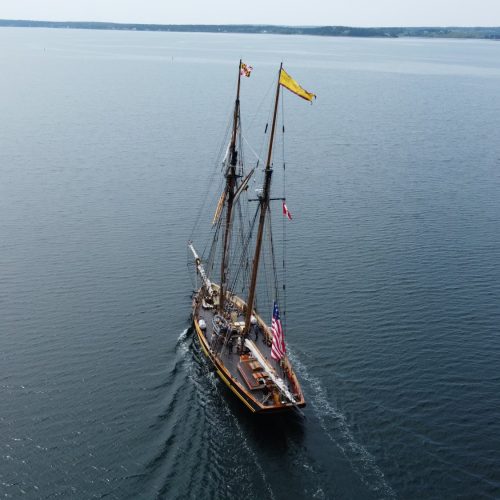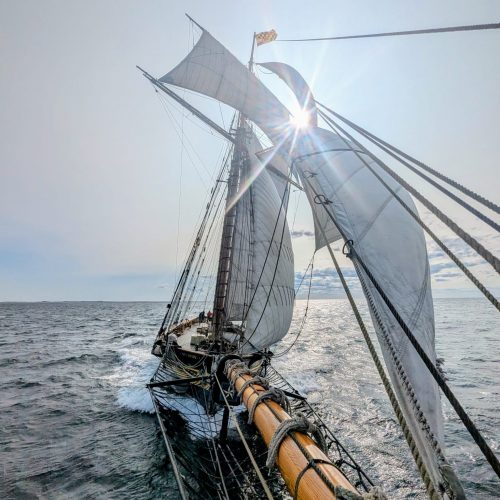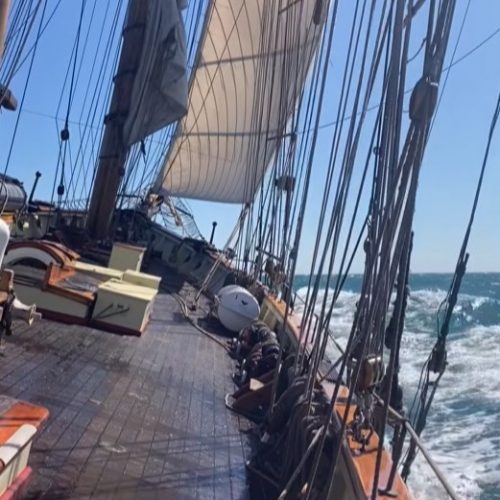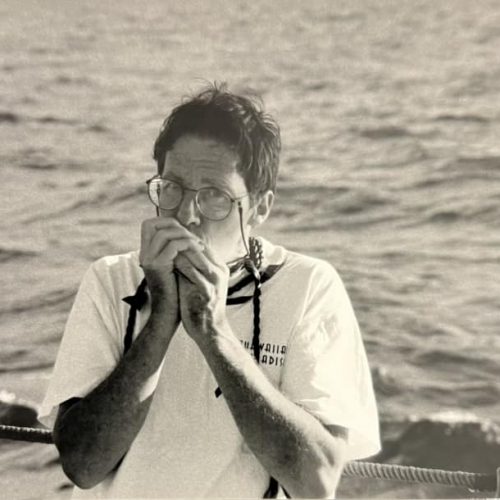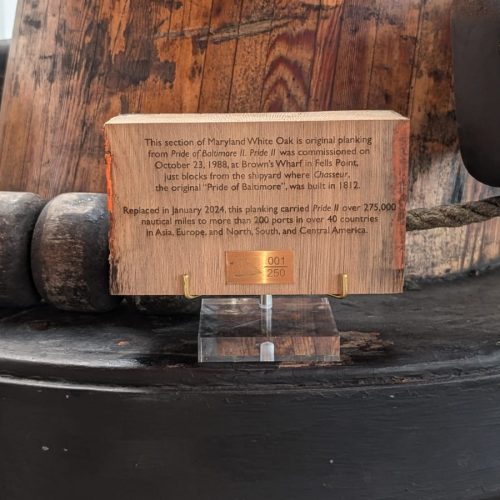For the effort all of the crew put into the race I find it interesting how “in the moment” the crew are after 300 nautical miles of dealing with wind vagaries by being intensely attentive to details they notice or are asked to deal with by their officers or this captain. I think my interest to review the race is a function of being responsible for the race…in the same way I am responsible for the way a voyage went well or not so well. Whereas the crew have different post race interests. The officers are somewhat analytic as I am. Meanwhile it looks to me as though the crew live in the moment, whatever that post race moment is. Not as a disinterest of the outcome of the race and why, but as a job well done no matter the outcome. To be sure, their work would be equally laudable had the outcome not been so rewarding. I admire that perspective because it is easy, way too easy to get into self congratulations at the expense of not recognizing the contributions by the crew as well develop possible disrespect of the efforts of other vessels that did not experience great success.
Pride sailed very well in this 300 mile race. While the crew jumped with alacrity to the frequent needs of getting good sailing accomplished, the officers examined and reexamined the possible strategies for getting the best results for effort. Such regular reevaluation of strategy resulted in Pride maximizing opportunities with the changing wind while avoiding or minimizing contrary wind circumstances – specifically by trimming properly for the changing winds and being careful to sail where the wind was rather than inadvertently go where the wind was not. The sail trim efforts are pretty basic but require attentiveness rather than assumption that the trim remained OK even with very small changes by the wind. Avoiding poor wind circumstances and proactively looking for good wind opportunities involves visualizing how wind plays around the shore. For instance, there are circumstances when getting close to shore can be good for getting better wind as well circumstances for getting poor or absolutely contrary wind. In our analysis of the wind patterns for this race it was best to avoid getting close to shore. It seems we were not the only ones to be thinking this. The captain of Niagra called me on the phone sometime after the race to celebrate and complement Pride on playing the wind patterns so well.
Niagra is an interesting story when it comes to racing. She is a full brig, meaning she is a fully square-rigged, two mast sailing ship, of the era of the 1812 War, which means she emulates to a strong degree the technology of that era. There is a popular modern myth that square-rigged sailing vessels cannot go to windward very well. Niagra is a square rigged vessel with a sailing performance that belies that myth. For three straight Tall Ship Challenge Races, Niagra has been one of the top two finishers of the fleet in two races and one of the top three finishers in a third race in a fleet of mixed rig vessels…the majority being schooners. How does the square rigged Niagra finish with or closely behind the more weatherly and quick schooners while sailing ahead of other schooners? Especially being larger hence heavier as well more complicated to sail? Partly by being a pretty weatherly brig, meaning she can brace her yards very close to the wind and her hull is an easily driven shape. But also by being well operated. So my strong compliments go to Niagra for being a mere three hours and 20 odd minutes behind Pride and the 2nd of the fleet to cross the finish line after 300 nautical miles of fickle winds some of which were contrary and some of which were favorable. At one point Niagra got 34 miles behind Pride. That distance closed up significantly as the second half of the race course was sailed hence brought the difference of time between her and Pride to a small number of hours. A full rigged brig only a small number of hours behind a weatherly and fast schooner after 300 nautical miles of rather vague and variable wind? Good job Niagra!!! Especially as none of the other vessels in the race fleet crossed the finish line less than 12 hours after Niagra finished!!
Huzzah! Niagra and her cracker jack crew!
Jan C. Miles and the crew of Pride of Baltimore II

